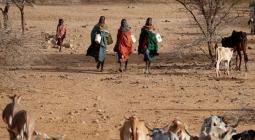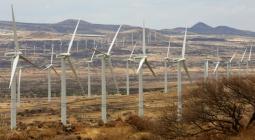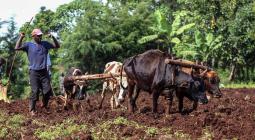At least 1m people facing starvation as Madagascar’s drought worsens
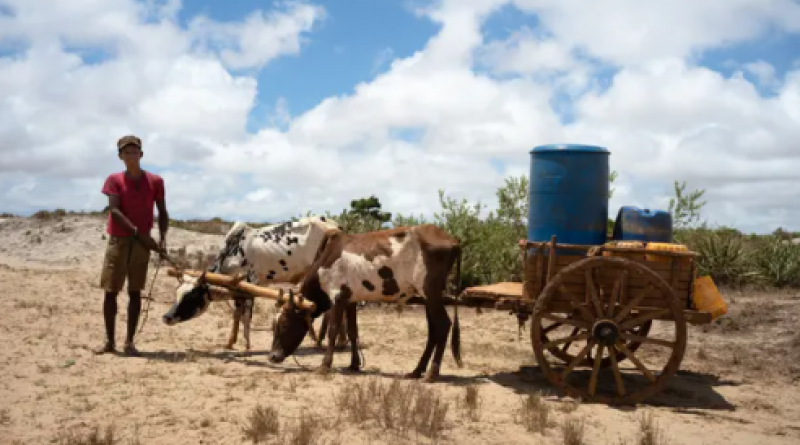
People eating termites and clay as UN says acute malnutrition has almost doubled this year in south.
Madagascar’s worst drought in 40 years has left more than a million people facing a year of desperate food shortages.
The south of the island will produce less than half its usual harvest in the coming months because of low rains, prolonging a hunger crisis already affecting half the Grand Sud area’s population, the UN estimates.
The south saw 50% of its usual rains during the October planting season, in a fourth year of drought.
Julie Reversé, emergency coordinator in Madagascar for Médecins Sans Frontières, said: “Without rain, they will not be able to return to the fields and feed their families. And some do not hesitate to say that it is death that awaits them if the situation does not change, and the rain does not fall.”
According to the Famine Early Warning System Network, most poor families have to rely on foraging for wild foods and leaves that are difficult to eat and can be dangerous for children and pregnant women. Aid agencies have reported people eating termites and mixing clay with tamarind.
Reversé said violent sandstorms (known as tiomena) in December made the situation worse by covering farming land and food such as the cactus fruit, which is often relied on during the “lean” season.
“Most of the people living in the southern part of Madagascar rely essentially on their harvest for food and income. Because of the drought and the lack of rain, people cannot cultivate what they usually eat or sell at the market,” said Reversé.
Jean-Louis Tovosoa, 52, a father of 15 who lives on the outskirts of Ambovombe, in Androy, the southernmost region of Madagascar, said life had become very difficult. “This year, we have nothing to eat. We rely on God’s providence for our survival. We are also asking the government to assist us. Otherwise, we will die,” he said.
“Over the five last years, tiomenas have become more and more frequent. They have been affecting a wide range of territory. There were no rains over the three last years. Because of the persistent drought, violent winds have swept away the good soil for cultivation. They have killed the cactus plants, which are vital for us in the time of famine. They have also destroyed crops and killed animals such as zebus [cattle], sheep and goats.”
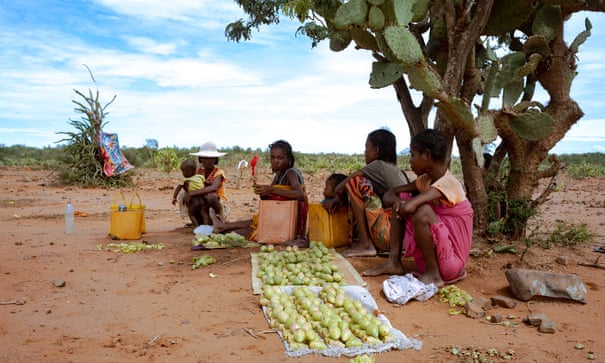
The UN World Food Programme says acute malnutrition in children under five has almost doubled over the past four months in most districts in the south. Ambovombe has the highest rates.
On Friday the Integrated Food Security Phase Classification (IPC), a multi-agency body that monitors global food security, issued an alert of a “sustained deterioration in food insecurity in the Grand South of Madagascar from April to December 2021”.
It said: “Over 1.1 million people are in high acute food insecurity due to insufficient rainfall, rising food prices and sandstorms. The lean season is expected to begin earlier than usual for the current consumption year, as households will deplete their low food stocks due to minimal production.”
Voriandro Tiandrainy, 42, a father of four from the district of Toliara II, on the western coast, said the drought had left many farmers unable to grow rice. “We enjoyed a wet climate before. Over recent years, it has become more and more dry. Farmers have had to abandon rice cultivation,” he said. Many people are now eating just one meal a day.
“Parents are also unable to pay school fees for their children. Moreover, a new disease has affected our zebus. We have never known this disease; it has killed 10 to 20% of the livestock.”
In response to the crisis, MSF began running a mobile clinic in late March and has so far treated more than 800 children for malnutrition, a third of whom were in a severe condition.
Reversé said MSF staff are also noticing other illnesses in the areas they work in, including bilharzia (a waterborne disease caused by parasitic flatworms), diarrhoea, malaria and respiratory infections. They said the illnesses were caused by malnutrition, as well as a lack of clean water.
According to the UN’s food agency, the number of people suffering from hunger has risen by about 85% on last year because of the accumulative effects of years of drought and people having to sell livestock and belongings to buy food.
People in the south are still sending family members to the cities to look for work but with little success because the Covid-19 pandemic has shut down small businesses and ended the seasonal work created by the tourism industry that had provided crucial income.
10 May 2021
The Guardian

